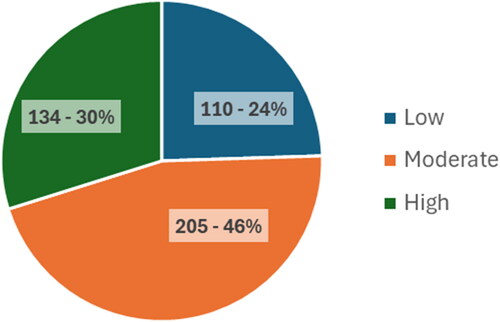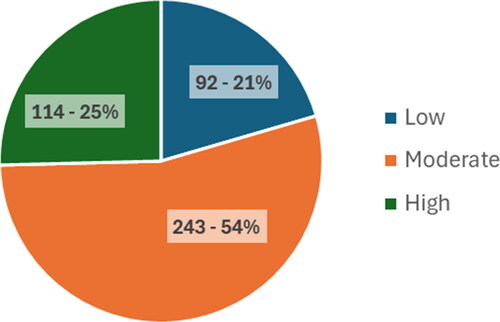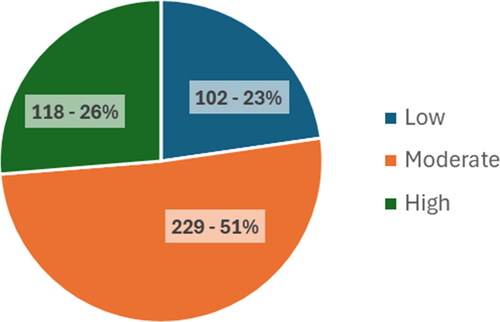Figures & data
Figure 1. Frequencies and percentages of state anxiety, Source: Sample questionnaires from the State-Trait Anxiety Inventory (STAI), Elaboration: Own.

Figure 2. Frequencies and percentages of trait anxiety.
Source: Sample questionnaires from the State-Trait Anxiety Inventory (STAI). Elaboration: Own.

Figure 3. Frequencies and percentages of social anxiety.
Source: Sample format of the Social Anxiety Questionnaire for Adults (CASE-A30).
Elaboration: Own.

Table 1. Descriptive statistics of social anxiety and its components Source: Sample format.
Table 2. Relationship of state anxiety and trait anxiety with the components of social anxiety.
Data availability statement
The data that support the findings of this study are available from the corresponding author, upon reasonable request.
